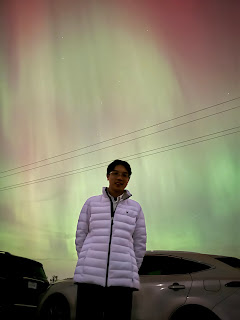作者: 蔡昇達
人們早早就知道腸子中的細菌對人的健康很重要,所以排便不順暢的大人或是小孩常會服用益生菌,近二十年來,醫師及科學家們從臨床的觀察:「巴金森氏症發病前十幾年,有相當高比例的人會有便祕的症狀」,接著由一系列的觀察性研究、介入性研究、動物實驗等,證實「腸-腦軸線(gut-brain axis)」的存在,即腸子中的細菌會經由代謝、基因等作用,影響腦部,而開啟了眾多的腸道菌研究,我個人覺得最清楚易懂的是下方的表格(出自盧森堡的團隊),其中藍色格子代表「正常人比巴金森氏症病人還多的細菌」,紅色表示「巴金森氏症病人比正常人還多的細菌」:
有趣的是益生菌常見之成份、我們喜歡的乳酸桿菌(Lactobacillaceae),竟然很一致的顯示在巴金森氏症的病人較多!這啟發我的好奇心: 或許對於巴金森氏症的病人,補充益生菌並不一定有益處?之後做了許多文獻的搜索,也發現對於急性胰臟炎的病人,若補充含有乳酸桿菌及比菲德氏桿菌屬的益生菌(Lactobacillus acidophilus, Lactobacillus casei, Lactobacillus salivarius, Lactococcus lactis, Bifidobacterium bifidum, and Bifidobacteriumlactis,Lancet 2008; 371: 651–59),其死亡率較未補充益生菌者為高,亦有文章談到商業利益對科學研究與發表的影響(Faecal transplantation, Pro- and Prebiotics in Parkinson’s Disease; Hope or Hype?),提醒科學家們謹慎看待。
2024 年法國團隊在新英格蘭醫學雜誌(NEJM)發表一篇重磅的研究,發現 Lixisenatide,一種 GLP1 agonist (糖尿病用藥),可以減緩巴金森氏症動作症狀的惡化(Meissner WG, Remy P, Giordana C, Maltête D, Derkinderen P, Houéto J-L, et al. (2024). Trial of lixisenatide in early Parkinson’s disease. N Engl J Med, 390:1176-1185.),表示此二重要疾病應有其關聯性,故中醫大神經內科與新陳代謝科陳主任合作,交叉比對,並篩選到屬及種(以前學的「界門綱目科屬種」)、並排除服用益生菌的病人,發現 Lactobacillus salivarius 及 genus Akkermansia 在巴金森氏症病人及糖尿病病人族群,均較健康人為多,或許可從一個角度推出巴金森氏症與糖尿病的關聯性,供後續的研究參考。(亦可參考本院出版的刊物: 中國醫訊 220 期第 19 頁)
此臨床研究很感謝計劃助理佳均、家甄、嘉嘉協助收案、建檔、簽同意書……等、感謝蔡崇豪院長及呂明桂主任協助收案,感謝檢驗部薛院長的指導、賴博、逸堯的資料分析、感謝已故的新陳代謝科陳清助主任的一同合作、感謝陳佳陽醫師幫忙收集臨床資料、感謝藝瀚、楊醫師在統計方面的協助、感謝 Mayo Clinic Marina 教授的合作分析,這篇文章經歷了四次的退稿,最後一次有位 reviewer 的評論亦相當嚴竣,感謝逸堯協助依 reviewer 的意見重做分析、展現高度的誠意,終被接受刊登,很高興與各位分享此研究,另外,建議您在補充益生菌前先詢問醫師的意見,或許補充益生菌不一定對您有好處。
本團隊發表在《科學報告》的全文如下:
English version:
Title: Gut Microbiota, Parkinson’s Disease, and Diabetes
For centuries, people have recognized the importance of gut bacteria in maintaining health. Adults and children with constipation often take probiotics, reflecting a widespread belief that “good bacteria” support gastrointestinal function. Over the past two decades, however, clinical observations and biomedical research have extended this understanding far beyond digestion.
One key clinical observation is that more than ten years before the onset of Parkinson’s disease (PD), a substantial proportion of patients already exhibit chronic constipation. Subsequent observational studies, interventional trials, and animal experiments have confirmed the presence of the gut–brain axis—a bidirectional communication network through which gut microbes influence brain physiology through metabolic, genetic, and immunologic mechanisms. This has catalyzed an explosion of gut-microbiome research.
Among many studies, a 2018 investigation by a research team in Luxembourg produced what I consider one of the most intuitive summary tables. In their analysis, blue cells represent bacterial taxa more abundant in healthy individuals, while red cells represent taxa more abundant in patients with Parkinson’s disease.
The Surprising Role of Probiotics in Parkinson’s Disease
A particularly intriguing finding is that Lactobacillaceae—a family of bacteria commonly found in probiotic supplements and widely regarded as beneficial—appears consistently elevated in Parkinson’s disease patients. This led me to question whether probiotic supplementation is universally beneficial.
Further literature review uncovered additional concerns:
A landmark randomized trial in The Lancet (2008; 371:651–659) showed that patients with acute pancreatitis who received probiotics containing Lactobacillus acidophilus, L. casei, L. salivarius, Lactococcus lactis, Bifidobacterium bifidum, and B. lactis experienced higher mortality compared with those who did not receive probiotics. Other commentaries have also raised questions regarding commercial influence on probiotic research (e.g., Faecal transplantation, Pro- and Prebiotics in Parkinson’s Disease: Hope or Hype?), reminding scientists to remain cautious and critical.
New Evidence Linking Parkinson’s Disease and Diabetes
In 2024, a French research group published a groundbreaking trial in the New England Journal of Medicine, demonstrating that lixisenatide, a GLP-1 receptor agonist used in diabetes treatment, slows the progression of motor symptoms in early Parkinson’s disease:
This finding suggests a mechanistic connection between diabetes and Parkinson’s disease.
In light of this, our neurology and endocrinology teams collaborated to analyze microbiome datasets. After cross-comparison, genus- and species-level filtering, and exclusion of patients taking probiotic supplements, we found that:
Lactobacillus salivarius, and Genus Akkermansia were elevated not only in Parkinson’s disease patients but also in patients with diabetes, compared with healthy controls. These shared microbial patterns provide a potential clue linking the two disorders, offering a valuable direction for future research.
Here is the link for our published article (on Scientific Reports):
Acknowledgments
This clinical study would not have been possible without the dedicated support of many colleagues. I am grateful to:
Project assistants Chia-Chun, Chia-Chen, and Chia-Chia for case enrollment, data entry, and consent procedures
Dean Chon-Haw Tsai and Director Ming-Kuei Lu for assistance with recruitment
Director Hsueh of the Laboratory Medicine Department for guidance
Dr. Lai and Yi-Yao for data analysis
The late Director Chen Ching-Chu (Endocrinology & Metabolism), whose collaboration and generosity made this study possible
Dr. Chen Chia-Yang for collecting clinical information
Dr. Yi-Han Hu and Dr. Chia-Chun Yang for statistical support
Professor Marina of Mayo Clinic for collaborative analyses
This manuscript went through four rounds of rejection, and the final reviewer’s critique was demanding. I am especially thankful to Yi-Yao, who re-analyzed the dataset in full alignment with the reviewer’s concerns. That rigorous effort demonstrated our sincerity and ultimately led to acceptance.
I am pleased to share these findings with you. Finally, I recommend consulting your physician before taking probiotic supplements—because, as research increasingly shows, probiotics may not always be beneficial for everyone.






































